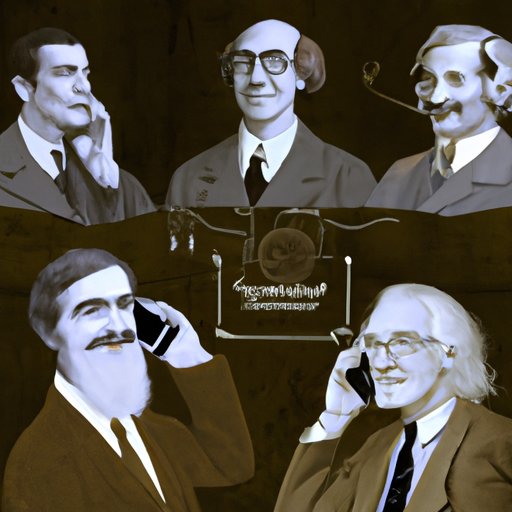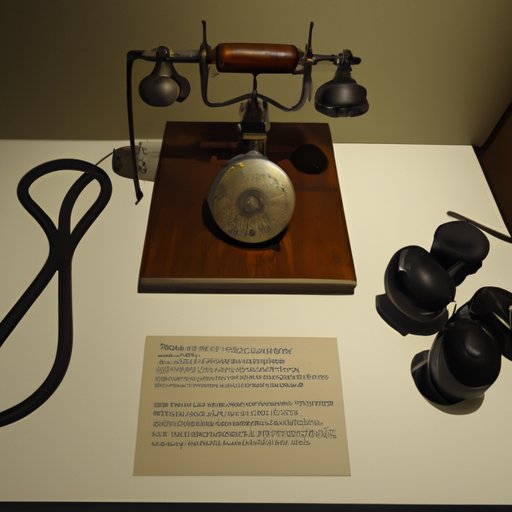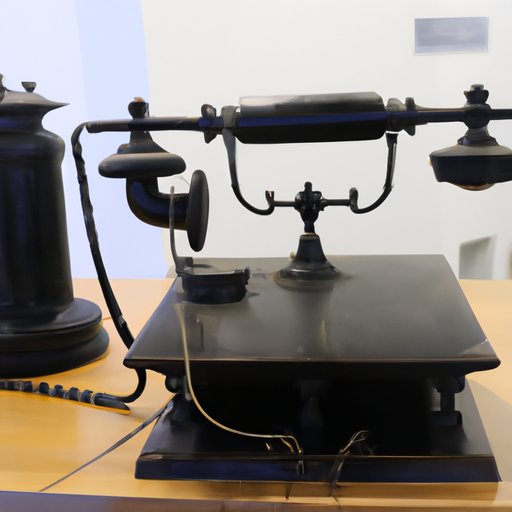Introduction
The invention of the telephone has revolutionized modern communication and connected people across the globe. Its impact on society is undeniable, and it has become an indispensable tool for personal and professional communication. But have you ever wondered how the telephone was invented?
This article aims to explore the history and development of the telephone, from its invention to its current status. We will look into the various pioneers who contributed to its invention, their respective roles, and the transition from the telegraph to the telephone.
A Historical Account of the Invention of the Telephone
Exploring the Pioneers Behind the Invention of the Telephone
The invention of the telephone is credited to two renowned inventors: Alexander Graham Bell and Elisha Gray. Though they are both considered pioneers in the field of telecommunications, Bell is often credited with the invention of the telephone due to his patent being granted first. However, it is important to note that many other inventors contributed to the invention of the telephone, including Antonio Meucci, Johann Philipp Reis, and Thomas Edison.
According to the Smithsonian Institute, “the invention of the telephone was the culmination of work done by many individuals, and led to an array of lawsuits relating to the patent claims of several individuals and numerous companies.”
The Development of the Telephone: How It All Began
In the mid-19th century, the telegraph was the primary means of communication between distant locations. The telegraph used electric signals to transmit messages over wires, allowing people to communicate at long distances with relative ease.
However, this method of communication had its limitations as it only allowed for one-way communication. This spurred the development of a device that could enable two-way communication. This is where the telephone comes in.
In 1876, Alexander Graham Bell and Elisha Gray both independently developed devices that could transmit speech electrically. Bell filed for a patent four hours before Gray, and his patent was granted first. Thus, Bell is often credited with the invention of the telephone.

A Look at the Inventors Who Revolutionized Communication
The Role of Alexander Graham Bell in the Invention of the Telephone
Alexander Graham Bell is widely regarded as the inventor of the telephone. Born in Scotland in 1847, Bell was an inventor, scientist, and engineer. He is best known for his invention of the telephone, which he patented in 1876.
Bell’s initial invention was a “harmonic telegraph” that could send multiple messages over a single wire at the same time. He then went on to improve upon this design with the help of his assistant, Thomas Watson, and eventually developed the first practical telephone.
Other Key Figures and their Contributions to the Invention of the Telephone
While Alexander Graham Bell is credited with the invention of the telephone, there were many other key figures who contributed to its invention. Antonio Meucci is credited with developing the first prototype of the telephone in 1849, though his invention remained largely unknown until much later.
Johann Philipp Reis also developed a working prototype of the telephone in 1861. His invention was able to transmit sound, though it was not able to reproduce intelligible speech.
Thomas Edison made significant improvements to the design of the telephone and is credited with the invention of the carbon microphone, which improved the clarity of the transmitted signal. Additionally, Edison also developed the first commercial telephone exchange in 1878.

The History of Telecommunications: From Telegraph to Telephone
The Development of the Telegraph
Before the invention of the telephone, the telegraph was the primary means of communication between distant locations. The telegraph was invented in 1837 by Samuel Morse and Alfred Vail, and it used electric signals to transmit messages over wires. It allowed people to communicate with each other quickly and easily over long distances.
The Transition from Telegraph to Telephone
The invention of the telephone marked a major shift in the history of telecommunications. By using electricity to transmit sound, the telephone enabled two-way communication between distant locations. This revolutionized communication and allowed people to connect with each other instantly without having to rely on the telegraph.
Today, the telephone is still an integral part of modern communication, although it has been supplemented by other technologies such as cell phones and the internet.
Conclusion
The invention of the telephone has revolutionized modern communication and connected people across the globe. Through this article, we have explored the history and development of the telephone, from its invention to its current status. We have looked into the role of Alexander Graham Bell and other key figures in the invention of the telephone, as well as the transition from the telegraph to the telephone.
The telephone has changed the way we communicate and has become an essential tool for personal and professional communication. It has enabled us to stay connected with each other, no matter how far apart we are.
(Note: Is this article not meeting your expectations? Do you have knowledge or insights to share? Unlock new opportunities and expand your reach by joining our authors team. Click Registration to join us and share your expertise with our readers.)
